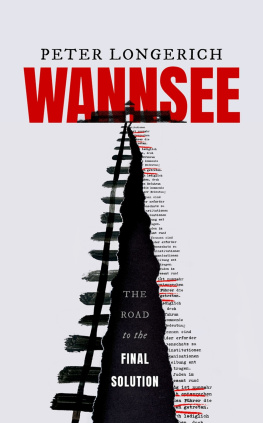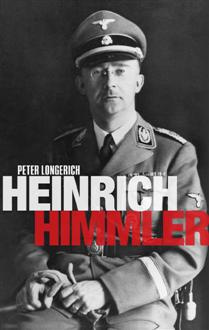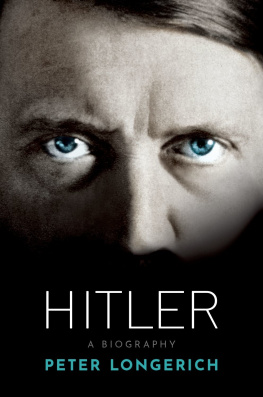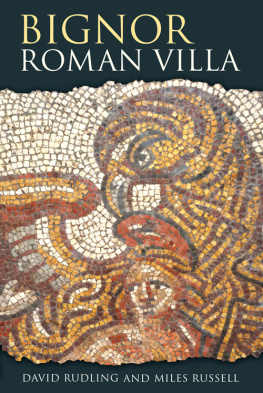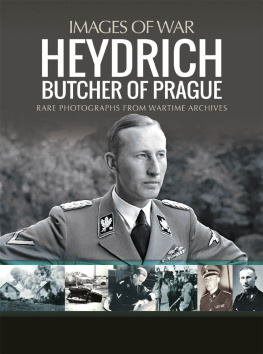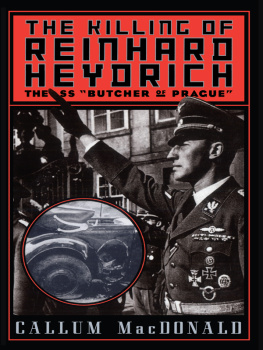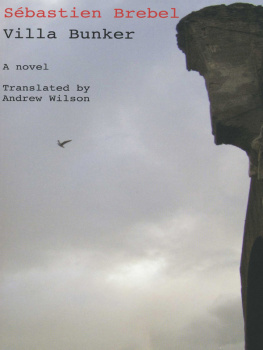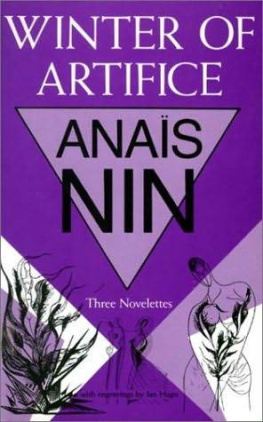Wannsee

Great Clarendon Street, Oxford, ox2 6dp , United Kingdom
Oxford University Press is a department of the University of Oxford. It furthers the Universitys objective of excellence in research, scholarship, and education by publishing worldwide. Oxford is a registered trade mark of Oxford University Press in the UK and in certain other countries
Pantheon Verlag, a division of Verlagsruppe Random House GmbH, Mnchen, Germany 2021 First published as Wannseekonferenz: Der Weg zur Endlsung by Siedler Verlag Peter Longerich 2016
The moral rights of the authors have been asserted
First Edition published in 2021
Impression: 1
All rights reserved. No part of this publication may be reproduced, stored in a retrieval system, or transmitted, in any form or by any means, without the prior permission in writing of Oxford University Press, or as expressly permitted by law, by licence or under terms agreed with the appropriate reprographics rights organization. Enquiries concerning reproduction outside the scope of the above should be sent to the Rights Department, Oxford University Press, at the address above
You must not circulate this work in any other form and you must impose this same condition on any acquirer
Published in the United States of America by Oxford University Press
198 Madison Avenue, New York, NY 10016, United States of America
British Library Cataloguing in Publication Data
Data available
Library of Congress Control Number: 2021932104
ISBN 9780198834045
ebook ISBN 9780192570758
Printed and bound in the UK by
TJ Books Limited
Links to third party websites are provided by Oxford in good faith and for information only. Oxford disclaims any responsibility for the materials contained in any third party website referenced in this work.
Contents
Auswrtiges Amt (Foreign Ministry)
Akten zur deutschen auswrtigen Politik
Auslandsorganisation der NSDAP (NSDAP/AO)
Archivum Panstwowe w Lublinie
Bundesarchiv, Abteilung Berlin
Bundesarchiv Militrarchiv, Abteilung Freiburg
Berlin Document Center
Centre de documentaton Juive Contemporaine
Durchgangsstrae
Deutschnationale Volkspartei (German National Peoples Party)
Einsatzgruppe
Einsatzkommando
Geheimes Staatspolizeiamt
Geheime Staatspolizei
Geschichte und Gesellschaft
Holocaust and Genocide Studies
Hherer SS- und Polizeifhrer (Higher SS and Police Leader)
Historische Zeitschrift
Institut fr Zeitgeschichte, Munich
International Military Tribunal
Konzentrationslager (also Kl)
Nationalsozialistische Deutsche Arbeiterpartei (National Socialist German Workers Party)
Osobyi Archive, Moscow (special archive)
Politisches Archiv des Auswrtigen Amtes, Berlin
Reichsgesetzblatt
Reichssicherheitshauptamt (Reich Security Head Office)
Sturmabteilung
Sicherheitsdienst
Sonderkommando
Schutzstaffel
SS- und Polizeifhrer (SS and Police Leader)
Staatsarchiv
Staatsanwaltschaft
The National Archives, London
The Trial of Adolf Eichmann
Trials of War Criminals Before the Nuremberg Military Tribunals
Vertreter des Auswrtigen Amtes (Foreign Ministry representative)
Die Verfolgung und Ermordung der europischen Juden durch das nationalsozialistische Deutschland 19331945
Vierteljahrshefte fr Zeitgeschichte
Verordnungsblatt fr das Generalgouvernement
SS-Wirtschafts- und Verwaltungshauptamt (SS Business and Administration Head Office)
YIVO Institute for Jewish Research
Zentrale Stelle Ludwigsburg
On 20 January 1942 fifteen men met at a luxury villa on the Wannsee, a lake on Berlins western outskirts. They had been invited by Reinhard Heydrich, head of the Reich Security Head Office (RSHA), and were almost all high-ranking representatives of the Nazi state, the Nazi Party, and the SS. They included four state secretaries, two further senior officials of equivalent rank, and an undersecretary. The villa, now the House of the Wannsee Conference, occupies an exceptionally attractive position on the lake, its imposing approach road opening out onto a large circular drive in front of the house itself. The site still gives visitors today a clear impression of the original owners ambition to create a grand, almost palatial, property in a striking setting. Its extensive, carefully designed park, its series of spacious and impressive rooms giving onto the park and the lake, its three terraces stretching the length of the garden side, and its conservatory complete with marble fountain were created to proclaim the success and refinement of its owner, a wealthy businessman, in the second decade of the twentieth century. The beautiful location contrasts starkly, however, with the purpose of that meeting in 1942. The villa had been taken over by the SS to provide accommodation for its guests, and the meeting was called to discuss the final solution to the Jewish question. The surviving minutes of the meeting record that the aim was to discuss precisely who was to be targeted and how to deport a total of 11 million people, subject them to extremely harsh forced labour, and kill any who survived or were no longer capable of work by some other method. The meeting was to conclude with breakfast.
The fifteen men included ten university graduates, nine of them qualified lawyers, eight of whom had a doctorate. The minutes suggest that they discussed these matters in a purposeful, business-like, and informed manner in comfortable surroundings and in a positively idyllic setting. While expressing a variety of different views on matters of detail, not a single one of them raised concerns about the project as a whole, namely the murder of 11 million Jews.
Today the minutes of the Wannsee Conference are seen as synonymous with the coldblooded, bureaucratically organized, and industrialized mass murder of the European Jews, as an almost unfathomable document capturing how the Nazi systems ideologically driven impulse to destroy was translated on the orders of the regimes highest authority into state action and mercilessly executed. In the words of the historian Wolfgang Scheffler at the opening of the House of the Wannsee Conference in 1992, No other document presents more clearly the overarching plan to exterminate the European Jews.
The immense importance of the minutes of the Wannsee Conference lies not only in the fact that they display the blatant cynicism and contempt for humanity of high-ranking representatives of the Nazi regime. The minutes are unique because, more than any other document, they demonstrate with total clarity the decision-making process that led to the murder of the European Jews. This decision-making processin other words, the proposals, meetings, instructions, and arrangements in which Hitler, Himmler, Heydrich, and other leading Nazi political figures were involvedtook place for the most part orally; to the extent that documents were generated at all, they were destroyed as far as possible or, if they survived, were written in the language of obfuscation. They did not survive, moreover, as a single corpus but were scattered far and wide. Those who initiated and organized this mass murder intended to cover their tracks systematically. Reconstructing the decisive sequences of events is thus a laborious task, for, although evidence is provided by many thousands of documents, some questions necessarily remain unanswered and thus there is considerable scope for interpretation.

